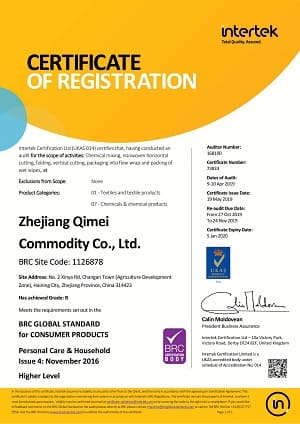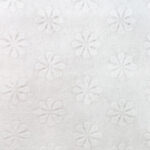Spunlace onwoven Tipo de tela: poliéster, material de mezcla de poliéster y viscosa, fibra de bambú, pulpa de madera (lavable), algodón o fibra de soja (biodegradable)
Plano o texturizado (su propio LOGOTIPO está disponible)
Peso: 30-80 g/m²
1/10/30/80/100/120/160 uds/paquete
Small wipes: These are typically around 4 inches by 4 inches (10 cm by 10 cm) or smaller. They may be designed for use on the face, hands, or other small areas.
Medium wipes: These are typically around 6 inches by 6 inches (15 cm by 15 cm) or larger. They may be designed for use on larger areas of the body, such as the arms, legs, or back.
Large wipes: These are typically over 10 inches by 10 inches (25 cm by 25 cm) or larger. They may be designed for use in industrial settings, for cleaning large equipment or surfaces.
1. Bolsa plástica resellable: este es el tipo más común de empaque de toallitas húmedas. Está hecho de plástico y tiene una tira resellable en la parte superior para mantener las toallitas húmedas y frescas.
2. Envase con tapa abatible: este tipo de envase consiste en un envase de plástico con una tapa abatible que se puede abrir y cerrar para acceder a las toallitas.
3. Paquete blando con tapa abatible de plástico: Similar al contenedor con tapa abatible, este empaque viene en un paquete blando y tiene una tapa abatible de plástico para facilitar el acceso.
4. Dispensador emergente: este tipo de empaque cuenta con un mecanismo dispensador emergente que saca una toallita a la vez.
5. Paquete de viaje: un paquete pequeño diseñado para usar sobre la marcha, a menudo viene con un cierre de presión de plástico.
6. Empaque de un solo uso: estas toallitas húmedas vienen en paquetes pequeños sellados que son convenientes para viajes o actividades al aire libre.
7. Bolsa de recarga: este empaque de mayor tamaño está diseñado para recargar otros recipientes de toallitas húmedas y, por lo general, tiene una abertura que se puede volver a sellar.
Water: Water is typically the main ingredient in oil-free wipes, as it provides the base for the solution that is used to clean the skin.
Surfactants: Surfactants are used to break down oil and dirt on the skin, allowing it to be wiped away. Common surfactants used in oil-free wipes include sodium lauryl sulfate, sodium laureth sulfate, and cocamidopropyl betaine.
Glycerin: Glycerin is a humectant that helps to moisturize the skin and prevent it from drying out.
Preservatives: Preservatives may be added to oil-free wipes to prevent bacterial growth and prolong the shelf life of the product. Common preservatives used in cosmetic products include phenoxyethanol, methylparaben, and propylparaben.
Fragrance: Fragrance may be added to oil-free wipes to give them a pleasant scent. However, some people may be sensitive to fragrances and may prefer fragrance-free products.
Other ingredients: Other ingredients that may be included in the formulation of oil-free wipes include emollients, antioxidants, and skin-soothing agents.
ISO 9001: This certification is focused on quality management systems and is widely recognized globally. It ensures that the manufacturer has an effective quality management system in place to consistently produce high-quality products.
ISO 22716: This certification is specific to the cosmetics industry and covers good manufacturing practices (GMPs) for cosmetics products. It ensures that the manufacturer has implemented appropriate hygiene practices and quality controls to ensure the safety and effectiveness of their products.
GMP certification: This certification is also focused on ensuring that products are manufactured consistently and meet quality standards. It can be a requirement in some countries or regions.
FDA registration: If the manufacturer is selling their oil-free wipes in the United States, they may need to register with the Food and Drug Administration (FDA). This registration indicates that the manufacturer is compliant with FDA regulations for cosmetic products.
EU Cosmetics Regulation: If the manufacturer is selling their oil-free wipes in the European Union, they need to comply with the EU Cosmetics Regulation. This regulation sets out requirements for the safety, labeling, and marketing of cosmetic products within the EU.












